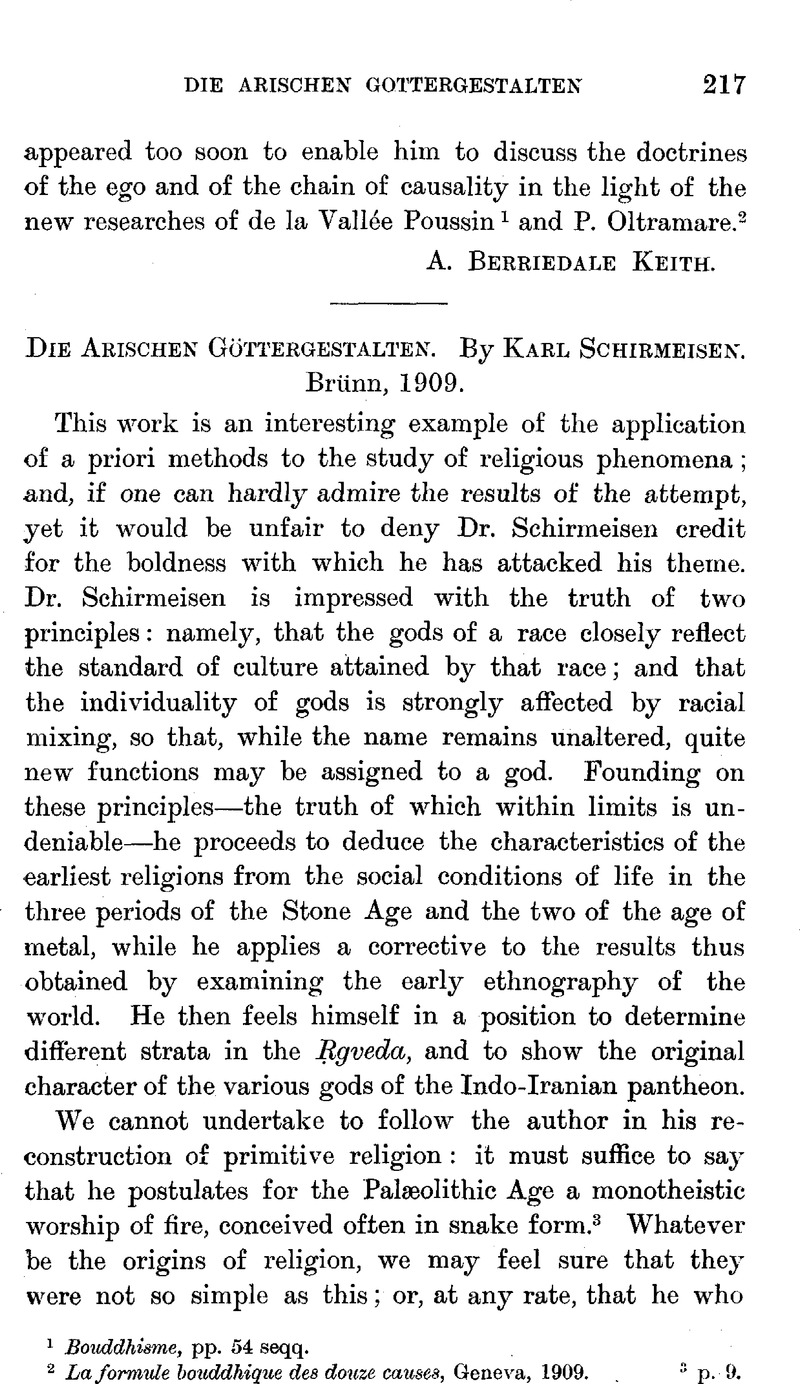No CrossRef data available.
Article contents
Die Arischen Göttergestalten. By Karl Schirmeisen. Brünn, 1909.
Review products
Published online by Cambridge University Press: 15 March 2011
Abstract

- Type
- Notices of Books
- Information
- Copyright
- Copyright © The Royal Asiatic Society 1910
References
page 217 note 3 p. 9.
page 218 note 1 pp. 24, 25, following Schaaffhausen.
page 218 note 2 p. 42.
page 218 note 3 See JRAS., 1909, pp. 721 seqq. Mr. Kennedy, ibid., p. 1114, revives Brunnhofer's famous “discovery” of an allusion in the Ṛgveda to the siege of Babylon. Without commenting on the other parts of Mr. Kennedy's article, it may at least be safely said that no competent Vedic scholar accepts this view, and that therefore it should not be quoted as evidence of a conquest of Babylon by the Aryans.
page 218 note 4 JRAS., 1909, pp. 1095 seq., and see also my note, ibid., pp. 1100seqq., and p. 472, and cf. Macdonell, , Sanskrit Literature, p. 12Google Scholar. Note should perhaps be taken of Shamasastry's attempt in his Gavām Ayana to rehabilitate the antiquity of the Vedic writings by finding in them evidence of an elaborate cycle (cf. JRAS., 1909, pp. 423 seqq.). It must suffice to say that the passages relied on by the author are in no case, so far as I can see, naturally interpreted in the light of his view, and in every case can be explained much more simply in other ways, while the attribution of any really elaborate knowledge of astronomy to the early Indians runs counter to all the available evidence as to the achievements in the field of the Vedic Indians (see Thibaut's article with its reference to Whitney cited in JRAS., 1909, p. 1102, n. 1). It is true that the Jyatiṣa does present us with a basis for a date, but unhappily that basis, in consequence of the inaccuracy of the datum and the vagueness of the point fixed, only gives a result which may vary hundreds of years on either side of the twelfth century b.c., and therefore we cannot build on it any secure structure.
page 218 note 5 pp. 43–7.
page 219 note 1 pp. 47–9.
page 219 note 2 Iran und Turan, p. 152.
page 219 note 3 See Hopkins, , AJP., xv, 154 seqqGoogle Scholar.
page 219 note 4 Hillebrandt, , Vedische Mythologie, ii, 156 seqqGoogle Scholar. Cf. Hopkins, , Transactions of the Connecticut Academy of Arts and Sciences, xv, 64 seqqGoogle Scholar.
page 219 note 5 Op. cit., iii, 162 seq. On this cf. Bloomfield, , Religion of the Veda, pp. 180 seqq.Google Scholar
page 219 note 6 p. 181.
page 219 note 7 ṚV., iv, 18.
page 219 note 8 ṚV., iv, 18, 13.
page 220 note 1 ṚV., i, 32, 9.
page 220 note 2 p. 183.
page 220 note 3 p. 94, n. 4.
page 220 note 4 p. 98.
page 220 note 5 p. 246.
page 220 note 6 p. 260.
page 220 note 7 p. 233.


